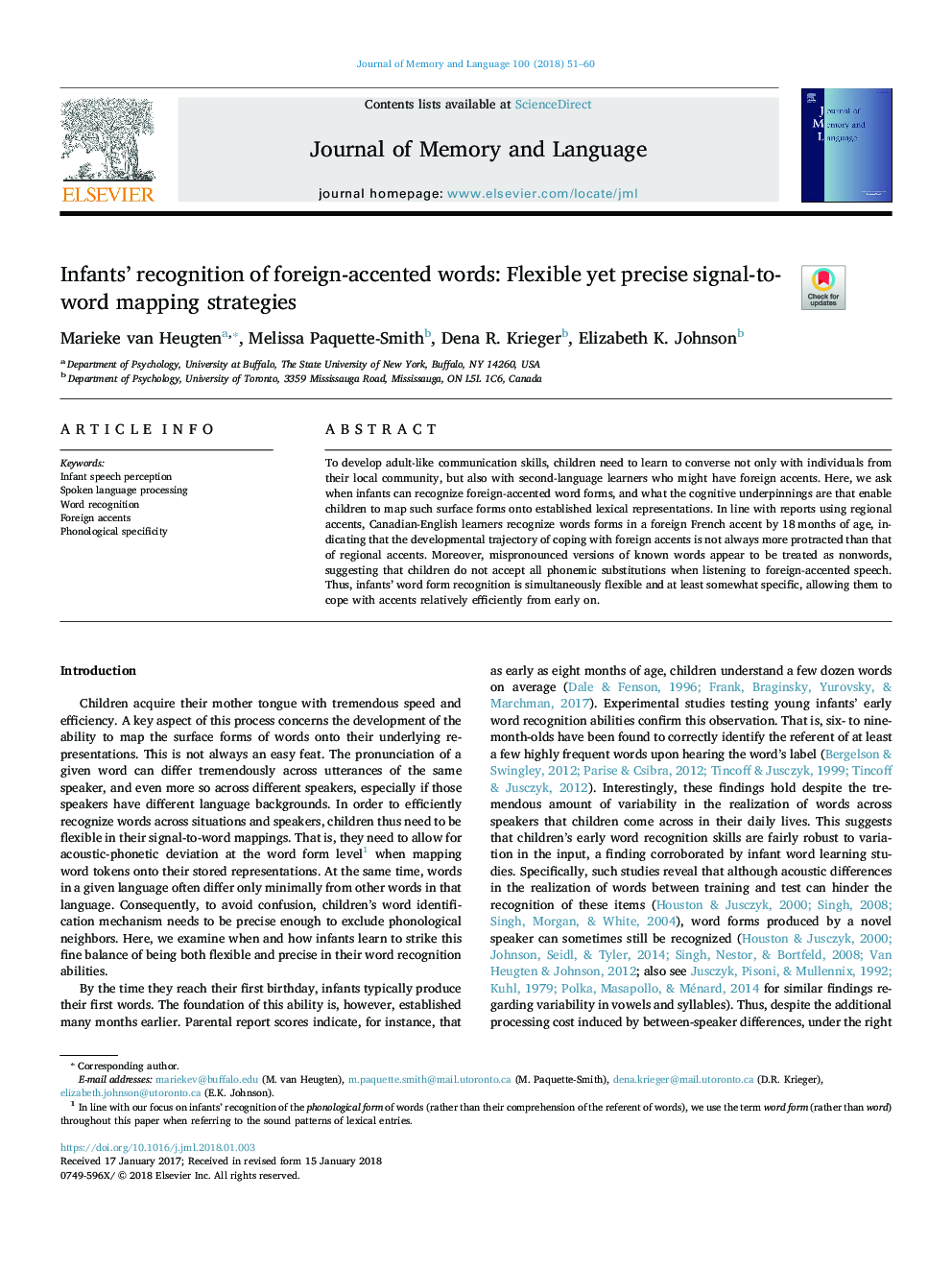| Article ID | Journal | Published Year | Pages | File Type |
|---|---|---|---|---|
| 7296826 | Journal of Memory and Language | 2018 | 10 Pages |
Abstract
To develop adult-like communication skills, children need to learn to converse not only with individuals from their local community, but also with second-language learners who might have foreign accents. Here, we ask when infants can recognize foreign-accented word forms, and what the cognitive underpinnings are that enable children to map such surface forms onto established lexical representations. In line with reports using regional accents, Canadian-English learners recognize words forms in a foreign French accent by 18â¯months of age, indicating that the developmental trajectory of coping with foreign accents is not always more protracted than that of regional accents. Moreover, mispronounced versions of known words appear to be treated as nonwords, suggesting that children do not accept all phonemic substitutions when listening to foreign-accented speech. Thus, infants' word form recognition is simultaneously flexible and at least somewhat specific, allowing them to cope with accents relatively efficiently from early on.
Related Topics
Life Sciences
Neuroscience
Cognitive Neuroscience
Authors
Marieke van Heugten, Melissa Paquette-Smith, Dena R. Krieger, Elizabeth K. Johnson,
